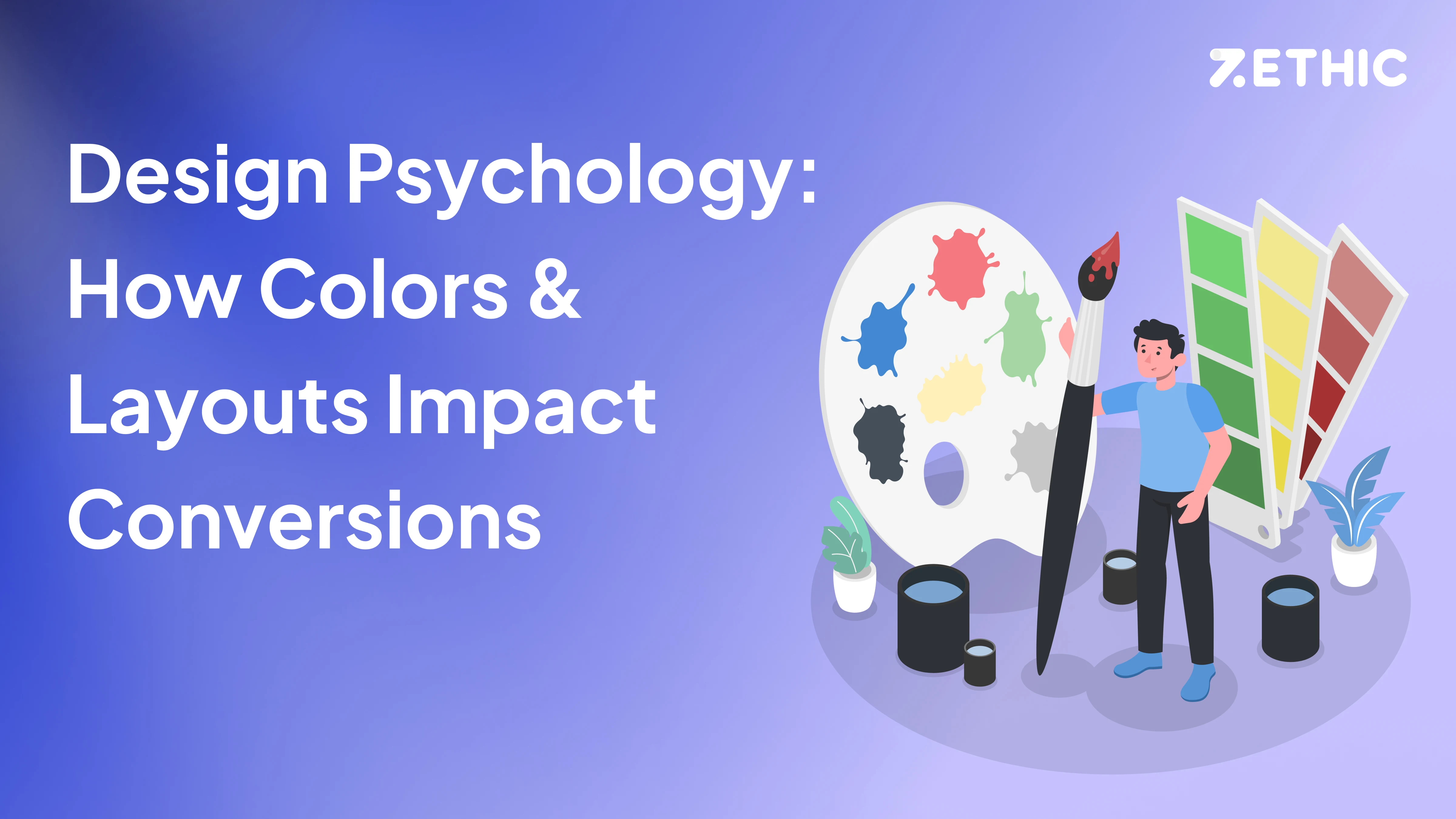Color plays a much bigger role in design than many realize. It can shape how people feel about your brand, how they interact with your website, and even whether they decide to take action. In digital marketing and UX design, thoughtful use of color can support stronger engagement and better results.
Here’s how color psychology works—and how businesses can apply it to create better online experiences.
Why Color Psychology Matters in UX
Colors influence emotion. They help set the tone for what people expect when they visit your website or app. Some colors are linked to certain feelings—blue often brings a sense of trust and calm, while red can create urgency or excitement.
These emotional reactions affect how people see your brand. A website that uses the right color combinations can feel more trustworthy, more welcoming, or more energetic—depending on what you want users to feel. It’s important to note, though, that color associations aren’t the same for everyone. Age, culture, and background all play a role in how colors are perceived.
Color Psychology and Emotional Associations
Colors can trigger emotional responses instantly—often without people even realizing it. Blue is commonly linked to reliability, red to energy, green to balance or growth. These feelings shape how users respond to your site and what kind of experience they take away. Choosing colors that align with your brand’s tone can make that experience more memorable and meaningful.
Need help choosing the right color palette for your brand or website?
Zethic specializes in color-driven UX/UI design that converts. Let our design experts help you align visuals with your business goals.
Ways to Apply Color Psychology in UX Design
Now that we understand the emotional influence of color, here are practical ways to apply it in your digital design:
1. Keep Brand Colors Consistent
Your color palette is part of your brand’s voice. Keeping it consistent across your website, app, emails, and social channels helps users recognize and remember you. Whether your brand feels bold or calm, your colors should reflect that every time someone interacts with your content.
2. Reflect the Right Mood
The colors you choose should match the feeling you want to create. If your brand is lively and action-driven, warmer tones like orange or red may suit you. If your focus is professionalism or wellness, cool shades like blue or green might work better. A good color scheme quietly communicates your brand’s personality from the first glance.
3. Help Users Focus
Color helps guide people through a page. A bright button, a highlighted link, or a colored section can show users where to click or what to read next. This kind of visual direction helps people move through your site easily, without feeling lost or unsure.
4. Make Sure Everyone Can Use It
Accessibility matters. Not all users see color the same way, so make sure your site uses enough contrast between text and background. Avoid relying on color alone to show important information. Clear, readable design benefits everyone.
5. Choose CTA Colors That Work
The color of your call-to-action (CTA) buttons can influence whether someone clicks. It’s not about picking a trendy color—it’s about choosing one that fits your message and stands out from the rest of the page. Testing different CTA colors can also help you find what works best for your audience.
6. Be Recognizable
Some of the most well-known brands are instantly recognizable because of their colors. Think of Facebook’s blue or Coca-Cola’s red. Your business can stand out the same way by using consistent, well-chosen colors that people start to associate with your brand.
7. Keep Testing and Improving
Good design isn’t final. People’s preferences change, and small updates can make a big difference. Try out new color combinations through A/B testing and see how users respond. It’s a simple way to keep your website feeling fresh and effective.
Want a UI audit or complete design revamp with proven psychological triggers?
Zethic can help boost your digital experience with research-driven UX strategies.
Sum up
Color is more than just a visual choice—it affects how people feel, think, and act. Used well, it helps users connect with your brand and take the steps you want them to take. Whether you’re designing a landing page or reviewing your entire website, color deserves careful attention.






